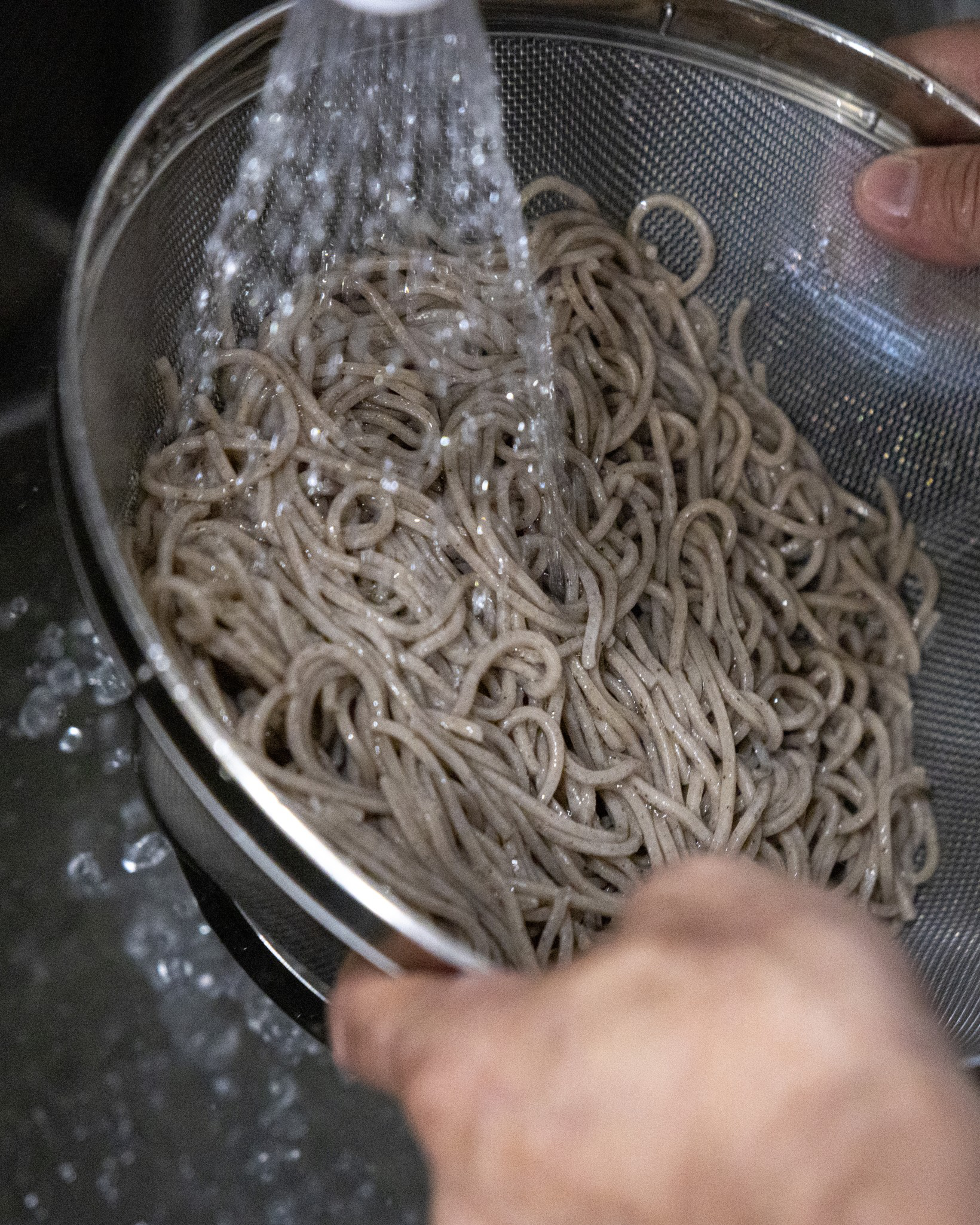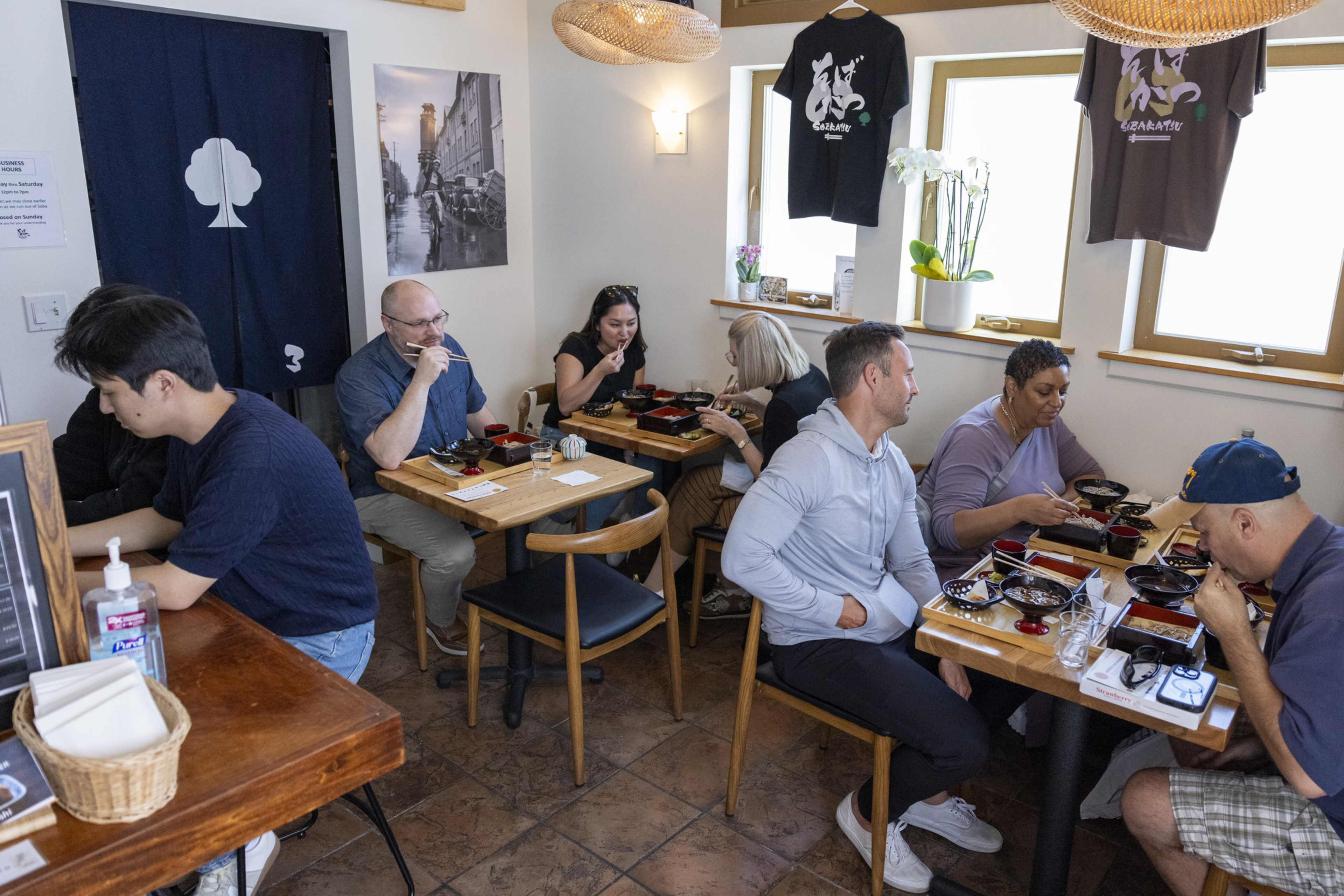In Eat Here Now, we serve up the newest, the buzziest or simply the rediscovered in SF food. If you can pick only one place to eat at this week — go here.
Before you set out to try Sobakatsu, the new soba restaurant a block from the Japan Center Malls, ask yourself one question: Are you willing to wait?
Because you’ll likely have to — it’s just the reality of dining at a one-of-a-kind restaurant with only 10 seats.
Shuichi Nihira and Yoshihiro Shinoda, who met while working at restaurants in Japantown and are first-time owners, are the only two people working. They serve as both chefs and servers, preparing steaming bowls of soba and ferrying them on lacquered trays to diners.
And why did they decide to open a shoebox-size restaurant with a single-minded menu? “We both love soba,” Nihira says simply. “We wanted to bring real soba to San Francisco. There’s too many ramen [restaurants].”


Nihira says Sobakatsu is the only restaurant in San Francisco making fresh buckwheat soba. (Soba Ichi (opens in new tab) in Oakland and Leichi (opens in new tab) in Santa Clara are doing it too.) To make it, the partners use stone-milled organic buckwheat flour from Maine-based Aurora Mills and Farm (opens in new tab), which grows the plant from seed stock imported from Japan. Then, they use an imported Japanese machine and filtered water to produce fresh, gluten-free noodles, a process that has taken months to perfect, Nihira says.
It’s clear they’ve found an underserved niche. I planned a weekday visit for the typically slow hours between lunch and dinner — but even at 2:35 p.m., I joined three diners scrolling on their phones, waiting in the restaurant’s tiny vestibule.

Before sitting, you place your order at a tablet on the front counter. The choices start with either hot or cold soba, plus the option to add sides. The most uncommon offering is warabimochi. The Japanese wagashi, or confection, is made from a large fern called bracken and, like buckwheat, has the benefit of being naturally gluten-free. Coated in toasted soybean flour called kinako, it’s almost flavorless but delicately sweet and nutty. Other accompaniments include shrimp or vegetable tempura and deep-fried vegetable fritters called kakiage.
By the time you’ve settled in, scanned the QR code on the table, and read the instructions for how to eat soba the Japanese way (slurping is not only acceptable but encouraged), your food will likely have arrived. I inhaled the nutty, al dente noodles, which were bathed in a light but umami-packed broth made with bonito and kombu, unabashedly slurping as instructed. Between loud gulps of soup, I dunked hot, tempura-battered squash and shrimp into my bowl, the airy batter yielding to the broth and steam. I waited 20 minutes for a seat, and devoured the entire meal in less than 12.
Nihira prefers cold soba, as hot broth can cook the noodles past their ideal texture. But in a city as foggy as San Francisco, he felt he had to offer hot options too. Eventually, he plans to expand the menu to reflect the restaurant’s name, a portmanteau of “soba” and “katsu,” the popular Japanese fried chicken cutlets.
Whenever he does, I’ll be willing to wait.
